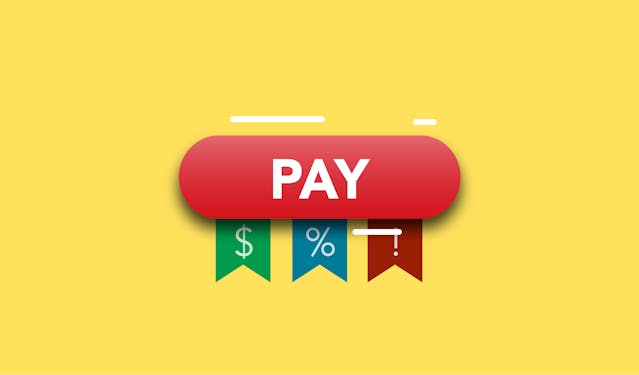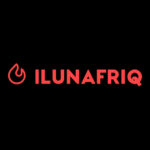
Costs Associated with Launching an NFT: A Comprehensive Guide
Introduction
Do you dream of launching an NFT collection? While the potential for innovation and profit is exciting, diving headfirst without a budget and a plan can lead to unexpected hurdles. You can’t just knock up a bunch of on-trend digital avatars, pop them up for sale, and sit back and watch the funds roll in. Does it appear that some NFT artists have done this? Ponder no more. With this comprehensive guide to the activities and costs involved with launching an NFT project, you’ll soon be on your way to launching yours.
Understanding NFT Launch Costs
NFT launch costs aren’t a one-time expense. Several factors contribute to the overall project budget, and neglecting some hidden gems can derail your financial plan.
From a technical standpoint and bare minimum, you must budget for the fees to have your NFTs minted, the costs to list them for sale, and the fees taken for successful purchases.
- Blockchain Fees: Every NFT resides on a blockchain, a digital ledger that verifies ownership and transactions. Minting NFTs involves recording them on the blockchain, and this process incurs “gas fees” – the cost of computation power used to validate the transaction. Gas fees can fluctuate significantly depending on the chosen blockchain and network congestion.
- NFT Platform Fees: Once minted, your NFTs need to be put up for sale. NFT marketplaces like OpenSea or Rarible typically charge listing fees, and a percentage of the final sale price. These fees vary across platforms, so comparing options is crucial.
Blockchain and Gas Fees Explained
Blockchain fees are what enable the network to keep running and provide utility to its members (holders). Often referred to as ‘gas fees’ (a term made popular by Ethereum), blockchain fees can vary. There are different rates for creating smart contracts, minting NFTs, and sending or receiving cryptocurrency (including NFTs). When the network is busy or in high demand, gas fees may be raised to ensure transactions are processed quickly.
Minting NFTs can cost from pennies to hundreds of dollars. Popular blockchains like Ethereum often experience high gas fees, which can eat into your budget. Alternative blockchains like Solana or Polygon offer lower gas fees, and may have a smaller user base for your NFTs. It’s important to know blockchain fees upfront in order to price your NFTs accordingly.
Platform Listing Fees: What to Expect
NFT marketplaces facilitate buying, selling, and showcasing your NFTs. These platforms typically charge listing fees to publish NFTs, ranging from a flat fee per NFT to a percentage of the list price. Additionally, some platforms take a cut of the final sale price when your NFT is purchased. Carefully researching and comparing platform fees ensures the chosen marketplace aligns with your budget and target audience.
Cross-chain NFT aggregation platforms like ilunafriq charge a very small fixed fee to showcase all your artwork on different blockchains with your own single, easy to share URL. From here, buyers can click-through to view an item they want on its respective marketplace.
Should you decide on ERC-721 for your drop, be aware that costs will be high not only for the initial ERC-721 smart contract, but for every NFT you mint.
Budget NFT marketing idea: With the existence of low-cost chains, you could consider listing on multiple altchains. You can market all of your NFTs in a single space on ilunafriq’s cross-chain NFT marketing and showcasing platform. Then allow buyers to mint the art on their preferred blockchain. As you start out, launch different pieces exclusive to each blockchain, to experiment where you get the best synergy.
Marketing and Promotion: Budgeting for Success
Next comes getting the word out – marketing and promotion in order to create the hype that gets your NFTs selling at successful prices.
If you have a successful social media following, you can leverage this asset as your marketing vehicle to launch NFTs. Your budget will be less as it’s simpler to market to your existing audience. This is why known artists and musicians leverage their fanbase to spread the word, and you can too.
Like any business, product, or brand, Marketing NFTs is no different. You might have the greatest digital artwork ever seen, or some incredible new smart contract the world doesn’t know it needs yet. But you’ll have to get the word out, and that’s why marketing needs to be factored into budget planning for NFT launches.
Example Marketing Costs:
- Social media promotion: Building a strong social media presence on platforms like Twitter and Discord is essential for engaging with potential buyers and promoting your NFTs. There are organic and paid methods to do this.
- Influencer marketing: Collaborating with relevant NFT influencers can significantly boost your project’s visibility. This likely comes at a cost to be negotiated upfront, such as, as a percentage of sales. Carefully factor this into your ROI.
- Paid advertising: Strategically placed paid advertising campaigns and sales funnels can drive traffic to your project and persuade buyers of the benefits of joining your community and purchasing your NFT(s).
The cost of marketing NFTs can vary widely depending on the chosen strategies and target audience. Marketing can vastly improve your chance of success. But if you’re without a mega marketing budget, don’t despair. There’s plenty to carry on organically, and building your own community is of high value in the long term. Hard work and perseverance can build a suitable following as proven by countless success stories.
Smart Contract Development and Audit Expenses
Your project might be for a new and unique adoption of an NFT standard, for example paired with Web3 wallets or a dApp. In which case you want to launch an NFT project based on Smart contracts, the self-executing agreements deployed on the blockchain that govern the functionalities of your NFTs. Developing a secure and robust smart contract can be expensive, and additional costs can be incurred for security audits to identify and eliminate vulnerabilities. While upfront costs might seem high, investing in a well-developed and audited smart contract protects your project’s integrity and increases user trust.
Doing something programmatic with NFTs is another way for projects to garner attention and success. These projects vary from the usual collection of digital art. There are ‘brainy’ projects out there which have become a success without relying on a large artist following or influencer endorsement. Of course this takes some programming chops. But if you’ve got the logic behind the concept all figured out, and just need a developer to implement it, this could cost anything from $5000 – $100,000, depending on complexity.
Additional Costs: Art Creation and Legal Considerations
If you’re creating the artworks yourself as an artist, you need to factor in the cost of your time, physical materials and/or software licensing. You might also elect to hire artists, animators, or designers, or use your technical skills to bring an otherwise offline artist into the digital realm.
How you go about minting art as an NFT is a marketing decision. The more expensive the art is in the real world, the more likely it is to command a premium in the digital world. If the project is from an unknown artist, a new artist or brand, your marketing budget could well benefit from a viral campaign to get the word out. And that’s difficult to do on the cheap. Spending more on the right artists could help ensure your project nails the zeitgeist of NFT popularity/ awareness and sales.
Depending on the complexity of your project, you may need to factor legal costs into your budget. Legal considerations for NFTs include intellectual property rights and potential regulatory frameworks. Consulting a lawyer specializing in blockchain technology can provide invaluable guidance.
Reducing Costs and Maximizing Your NFT Launch Budget
While launching an NFT project requires financial investment, there are strategies to optimize your budget:
- Utilize alternative blockchains: Consider using blockchains with lower gas fees like Solana, Polygon, or Tezos.
- Choose the right platform: Research NFT platforms with competitive listing fees and a user base suited to your target audience. Also compare prices before settling on a platform.
- Explore all marketing strategies: Utilize social media promotion and community building to generate buzz. Consider multichain NFT aggregation and showcasing platforms such as ilunafriq.
- Work with freelance talent: Consider collaborating with freelance artists or developers for potentially lower costs compared to established studios.
Conclusion
Essential costs for launching a successful NFT project go beyond just the art and minting. By carefully planning, exploring cost-saving strategies, and prioritizing high-impact investments, you can maximize your budget and launch your NFT project with a solid foundation.
A successful NFT project goes beyond just the launch. Building a strong community, fostering engagement, organic and paid marketing, and finally staying adaptable are key factors for long-term success. If you don’t make it the first time, a second drop might be more popular as your following grows in the NFT ecosystem. With a well-planned budget and a commitment to excellence, your NFT project can become a thriving venture in the digital world.
Do consider a cross-chain NFT marketing approach, whereby you can showcase and categorize all of your NFT art!




